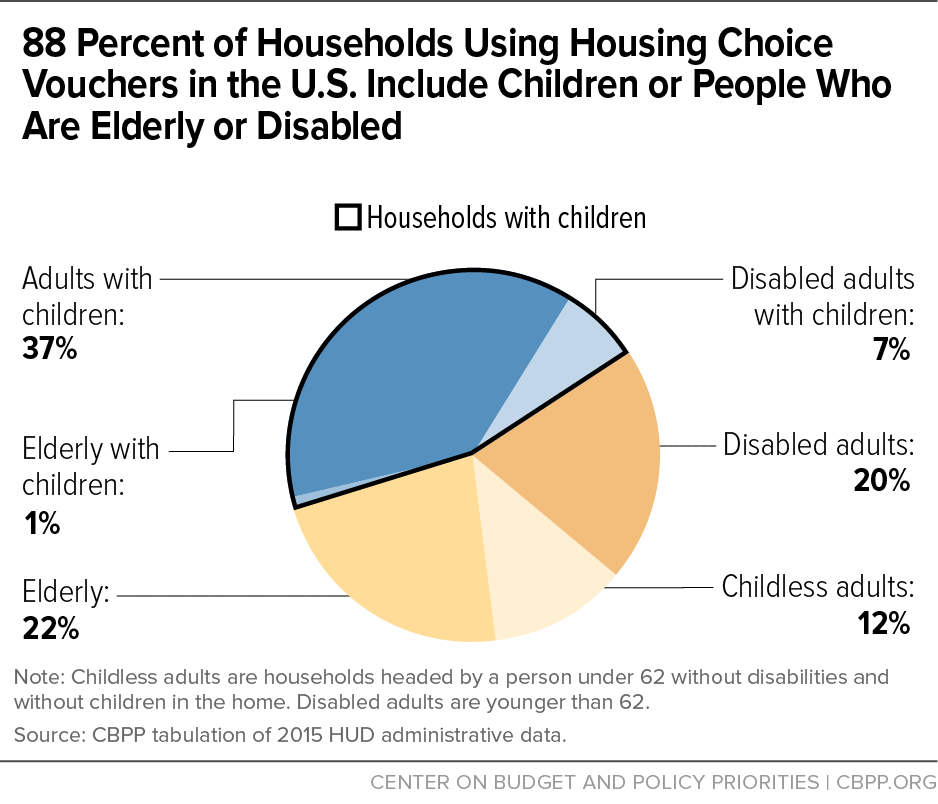BEYOND THE NUMBERS
Housing Choice Vouchers help low-income families afford decent, stable housing and prevent homelessness in every state, as we detail in our updated state fact sheets. Almost 90 percent of the 2.2 million households using vouchers are elderly, disabled, or families with children (see chart).

Nationally, half of all voucher holders are elderly or disabled, while 37 percent are families with children. The households that receive vouchers vary greatly by state, however, with vouchers mainly assisting elderly or disabled renters in some states and families with children in others. And most voucher families who can work do so: nearly 70 percent of non-elderly, non-disabled households using vouchers were working in 2015 or had worked recently.
Vouchers help families avoid homelessness. They can also boost children’s chances for long-term success. Children in families that use housing vouchers to move to better neighborhoods are likelier to attend college, less likely to become single parents, and earn more as adults, according to recent groundbreaking research.
Our fact sheets highlight how states use vouchers to combat homelessness. Nationally, the number of homeless veterans has fallen by about 36 percent since 2010, due largely to targeted investments in vouchers through the Veterans Supportive Housing Program (HUD-VASH). In 2015, 56,000 formerly homeless veterans used a VASH voucher to find housing.
Yet funding shortages keep most people in need of a housing voucher from getting one. More than one in four very low-income renters in the United States pay over 30 percent of monthly income for rent — the federal standard of affordability — and don’t receive a Housing Choice Voucher or other federal rental assistance. A significant share of these cost-burdened families — 39 percent, or 5.4 million households — have children under age 18 at home.
Other families don’t live in a home of their own. Some 1.36 million school-age children lived temporarily with other families or in other unstable housing during the 2013-2014 school year — an all-time high. Homelessness, particularly among children, affects families in every state, our fact sheets show.
Despite vouchers’ proven effectiveness, the number of vouchers available fell in recent years due to budget cuts. These cuts helped drive a decline of over 175,000 families with children using vouchers since 2004. To begin addressing these problems, Congress should include the $88 million that President Obama requested to fund 10,000 new housing vouchers for homeless families in the final 2017 housing appropriations bill.
